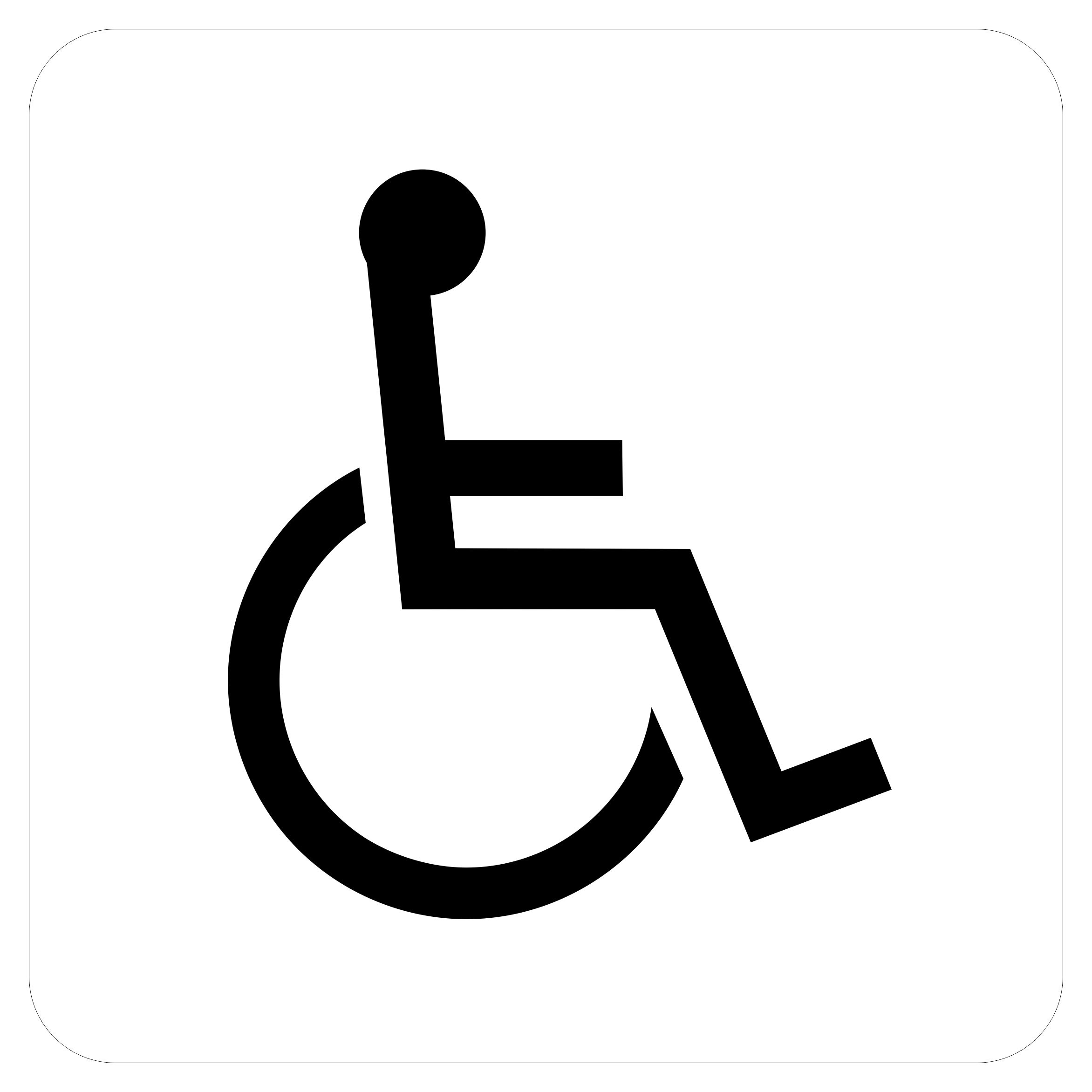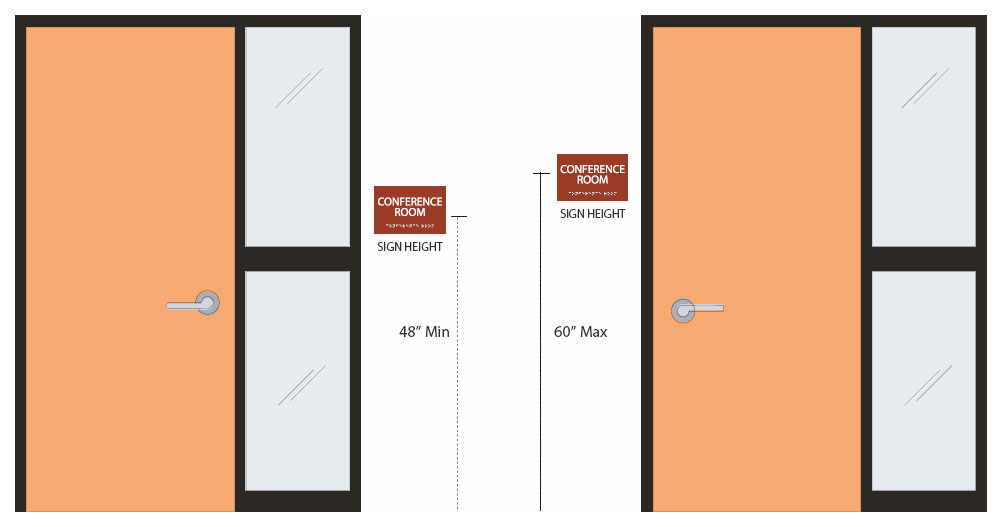Check out the Importance of ADA Signs in Public Spaces
Wiki Article
Checking Out the Key Attributes of ADA Indications for Improved Ease Of Access
In the realm of accessibility, ADA indicators offer as silent yet effective allies, making sure that spaces are comprehensive and accessible for individuals with specials needs. By incorporating Braille and tactile elements, these signs break barriers for the aesthetically damaged, while high-contrast shade systems and understandable font styles provide to diverse aesthetic demands.Significance of ADA Compliance
Ensuring conformity with the Americans with Disabilities Act (ADA) is critical for cultivating inclusivity and equivalent access in public spaces and work environments. The ADA, passed in 1990, mandates that all public facilities, companies, and transport services fit people with handicaps, guaranteeing they enjoy the very same rights and opportunities as others. Compliance with ADA criteria not only meets legal commitments but also enhances an organization's online reputation by showing its commitment to variety and inclusivity.One of the key facets of ADA compliance is the implementation of accessible signage. ADA indications are made to guarantee that people with disabilities can conveniently navigate via rooms and buildings.
Additionally, adhering to ADA laws can reduce the threat of legal effects and potential fines. Organizations that fall short to follow ADA guidelines may encounter charges or claims, which can be both harmful and economically burdensome to their public image. Hence, ADA conformity is indispensable to promoting a fair atmosphere for everyone.
Braille and Tactile Aspects
The consolidation of Braille and tactile components right into ADA signage symbolizes the concepts of ease of access and inclusivity. These features are vital for individuals that are blind or aesthetically impaired, enabling them to browse public areas with higher independence and confidence. Braille, a tactile writing system, is crucial in supplying written info in a style that can be easily regarded via touch. It is normally placed underneath the matching text on signs to make sure that people can access the details without aesthetic help.Responsive components prolong beyond Braille and consist of increased characters and symbols. These elements are created to be discernible by touch, enabling individuals to recognize area numbers, restrooms, exits, and other important areas. The ADA establishes specific guidelines relating to the dimension, spacing, and placement of these responsive components to maximize readability and make sure consistency across different atmospheres.

High-Contrast Shade Systems
High-contrast color plans play a pivotal function in improving the visibility and readability of ADA signage for people with visual disabilities. These systems are essential as they maximize the difference in light reflectance in between message and history, making sure that signs are conveniently noticeable, also from a range. The Americans with Disabilities Act (ADA) mandates the usage of certain color contrasts to accommodate those with restricted vision, making it an important facet of compliance.The effectiveness of high-contrast shades hinges on their capability to stand apart in various illumination conditions, including poorly lit environments and areas with glow. Normally, dark message on a light history or light message on a dark background is used to attain additional info optimum contrast. Black text on a white or yellow history provides a stark visual difference that assists in fast acknowledgment and understanding.

Legible Fonts and Text Size
When taking into consideration the style of ADA signs, the choice of understandable font styles and suitable message dimension can not be overemphasized. These aspects are essential for guaranteeing that signs are accessible to individuals with visual impairments. The Americans with Disabilities Act (ADA) mandates that font styles must be not italic and sans-serif, oblique, manuscript, very ornamental, or of unusual kind. These requirements aid make certain that the message is quickly understandable from a range and that the characters are distinct to diverse target markets.click for info According to ADA standards, the minimal message elevation need to be 5/8 inch, and it ought to raise proportionally with viewing distance. Consistency in message size contributes to a natural visual experience, aiding individuals in browsing atmospheres efficiently.
In addition, spacing between lines and letters is important to readability. Ample spacing avoids personalities from showing up crowded, enhancing readability. By sticking to these criteria, designers can substantially boost access, ensuring that signage offers its intended function for all individuals, despite their aesthetic capabilities.
Efficient Placement Approaches
Strategic positioning of ADA signs is crucial for making best use of access and making sure conformity with legal standards. Properly located indicators lead people with disabilities successfully, promoting navigating in public areas. Trick factors to consider consist of height, proximity, and presence. ADA standards stipulate that indicators must be installed at an elevation between 48 to 60 inches from the ground to guarantee they are within the line of sight for both standing and seated individuals. This basic height range is critical for inclusivity, allowing wheelchair individuals and individuals of differing heights to accessibility information effortlessly.Furthermore, signs have to be placed nearby to the latch side of doors to allow easy recognition before entrance. Consistency in indicator positioning throughout a center enhances predictability, lowering complication and boosting general individual experience.

Final Thought
ADA signs play a vital function in promoting accessibility by incorporating attributes that attend to the demands of people with handicaps. These components jointly promote an inclusive atmosphere, highlighting the importance of ADA compliance in ensuring equivalent accessibility for all.In the realm of availability, ADA indications offer as quiet yet powerful allies, making sure that areas are comprehensive and accessible for individuals with specials needs. The ADA, enacted in 1990, mandates that all public facilities, companies, and transport services fit people with specials needs, ensuring they enjoy the very same rights and opportunities as others. ADA Signs. ADA indicators are created to make sure that individuals with specials needs can conveniently browse with structures and rooms. ADA guidelines specify that signs should be installed at a height in between 48 to 60 inches from the ground to guarantee they are within the explanation line of view for both standing and seated individuals.ADA indications play an important role in advertising ease of access by integrating functions that deal with the requirements of people with impairments
Report this wiki page